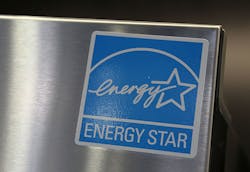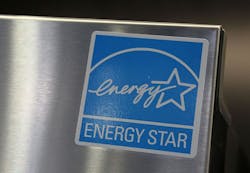Most of us in the HVACR industry are familiar with ENERGY STAR. It was introduced in 1992 by the U.S. Environmental Protection Agency (EPA) as a voluntary labeling program designed to identify and promote energy-efficient computers and monitors. Today, the program is administered jointly by the EPA and the U.S. Department of Energy (DOE) and applies to both products, including major appliances, office equipment, lighting, and home electronics, and buildings, ranging from new homes to commercial and industrial buildings. It is estimated that in 2012 alone, the program saved energy users $24 billion. ENERGY STAR also is credited with driving innovative new technologies, such as energy-efficient power-management systems for office equipment.
The Trump administration’s recently released 2018 budget, titled “America First: A Budget Blueprint to Make America Great Again,” proposes cutting $2.6 billion from the EPA’s budget, a 31-percent reduction from the current budget. Included in those cuts are more than 50 programs, including ENERGY STAR. The DOE also is facing a cut for the Office of Energy Efficiency & Renewable Energy, which is the DOE office responsible for ENERGY STAR.
It is, of course, ultimately up to Congress to determine whether the ENERGY STAR program is eliminated. Although some members of the current administration and Congress have expressed skepticism about climate change, many nevertheless agree that reducing energy consumption—and our dependence on foreign oil—is a matter of national security. And because this is a voluntary program that has demonstrated the ability to save consumers billions of dollars, Congress may see it as a positive political move to keep the program.
If, however, Congress chooses to kill the program, there may be alternatives. For example, it has been suggested the program be taken over by the American Council for an Energy-Efficient Economy (ACEEE), a nonprofit organization dedicated to advancing energy-efficiency policies, programs, technologies, investments, and behaviors. Although the ACEEE has rejected that idea, there are other nonprofit organizations, as well as industry associations and businesses—many of which have expressed opposition to eliminating ENERGY STAR—that might be capable of taking over the program. However, any privatization efforts will have significant obstacles to overcome. For example, the recognition factor for the ENERGY STAR program is arguably very high (we constantly see the logo on our computers, monitors, printers, copiers, kitchen appliances, etc.). So, whatever organization steps in would have to be well-known, independent, and completely objective and unbiased. The last criteria, rightly or wrongly, probably would eliminate industry associations, as their members could have a stake in the program’s outcomes.
There also would be financial and logistical challenges with which to contend. Raising $50 million per year and replacing staff from two government agencies would be daunting, to say the least. Of course, $50 million to save $24 billion sounds like a bargain to me, especially when we’re talking about a government program. Clearly, the best alternative is for Congress to continue this demonstrably successful program. Let your senators and representatives know how you feel.
About the Author
Larry Clark
A member of HPAC Engineering’s Editorial Advisory Board, Lawrence (Larry) Clark, QCxP, GGP, LEED AP+, is principal of Sustainable Performance Solutions LLC, a South Florida-based engineering firm focused on energy and sustainability consulting. He has more than two dozen published articles on HVAC- and energy-related topics to his credit and frequently lectures on green-building best practices, central-energy-plant optimization, and demand-controlled ventilation.

